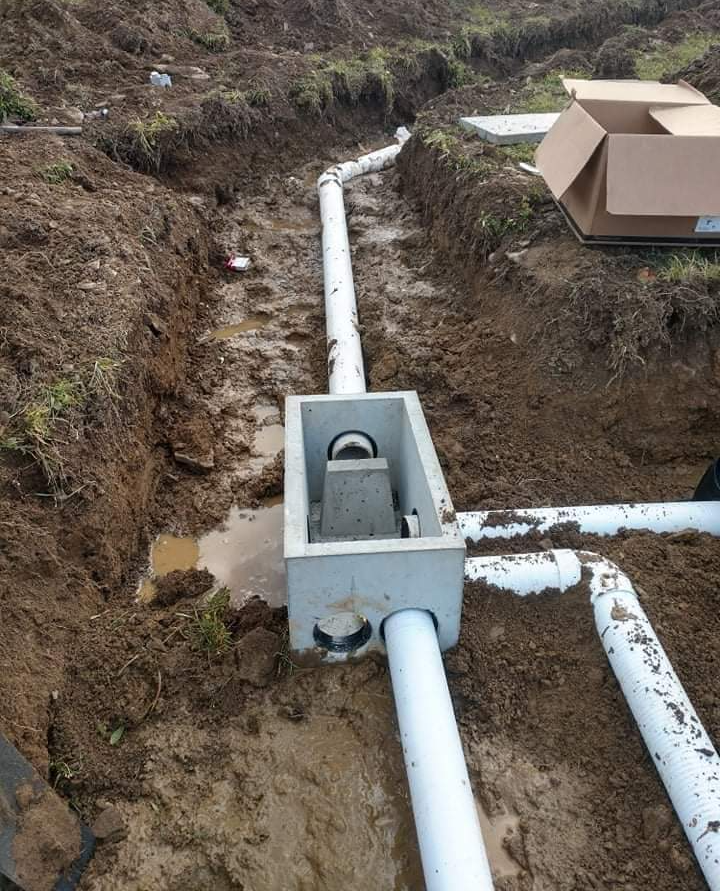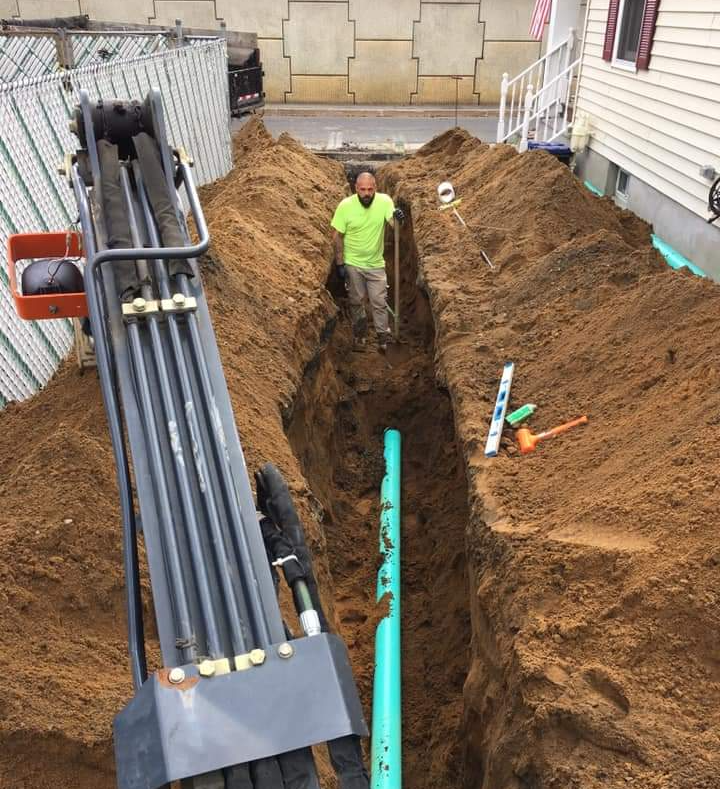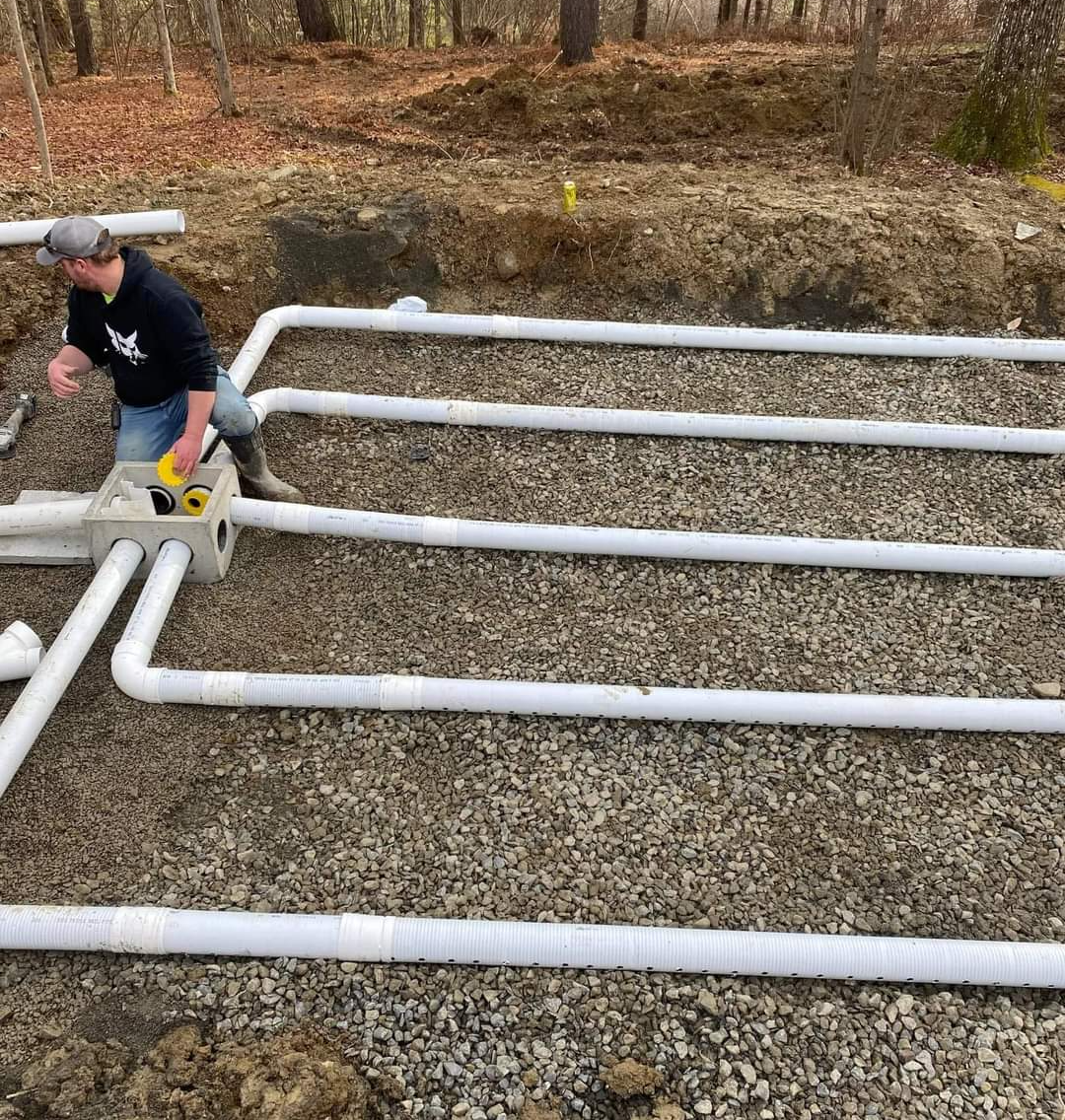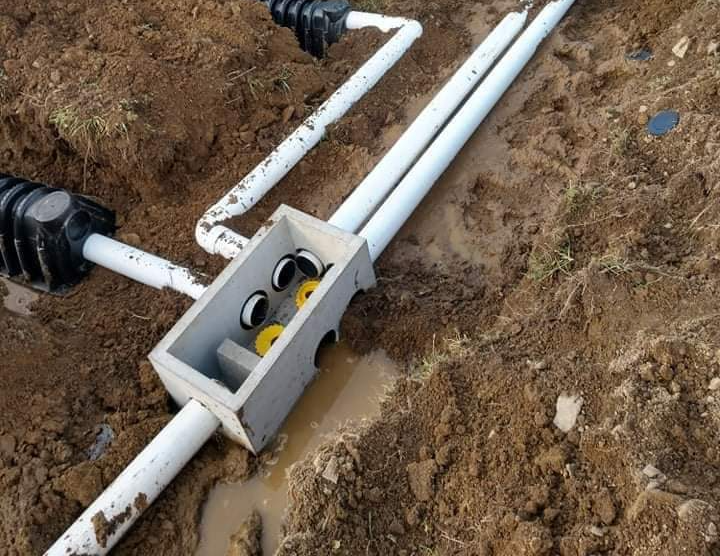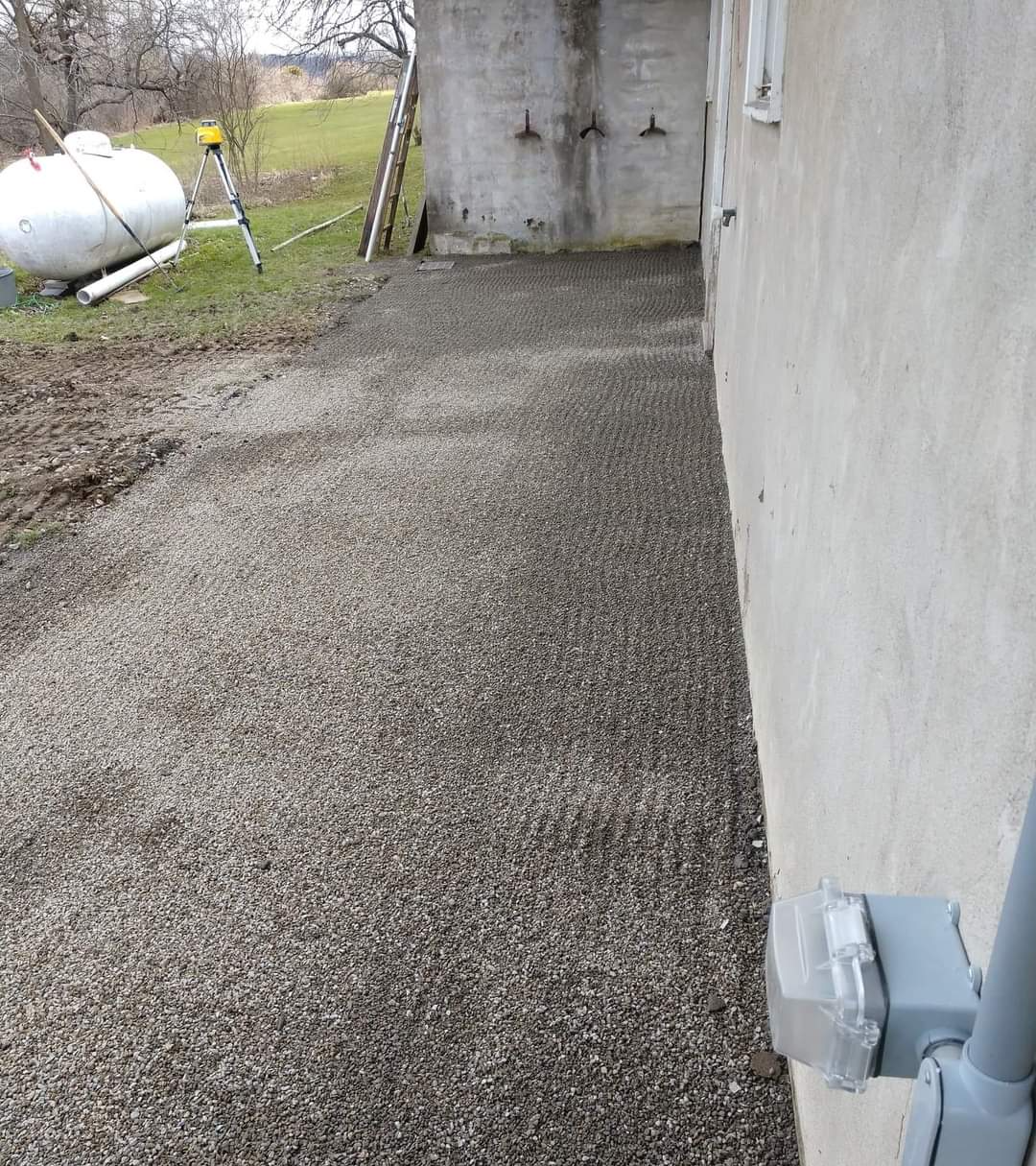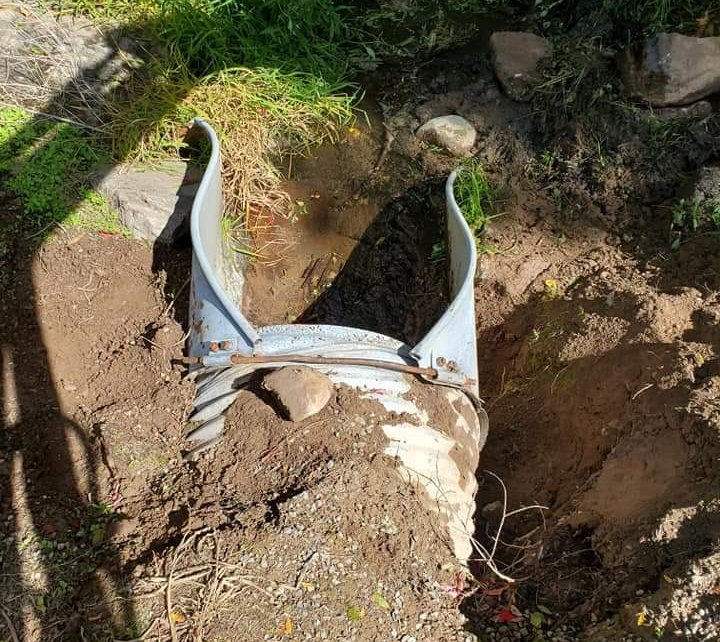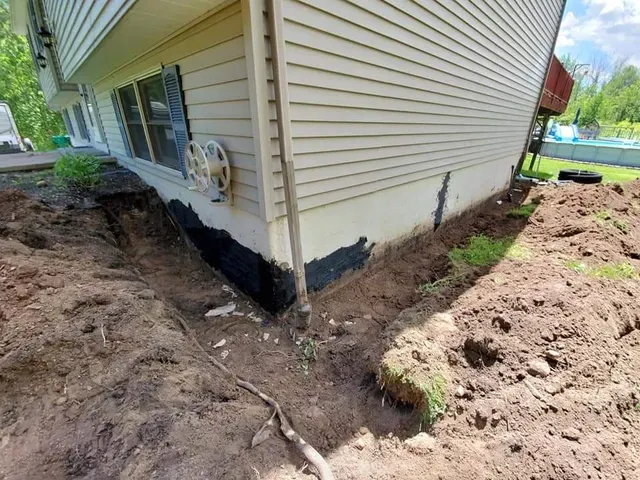We've been providing excellent service as
Erosion Control Contractors
...for over 20 years!
Erosion Control Overview
Erosion control is a process that controls the movement of water so it does not cause erosion.
Erosion of the soil can lead to land degradation, affecting the overall functional ability of the property and the property's value itself.
Erosion prevention and control strategies also protect infrastructure from damage caused by floods or large volumes of sand, as well as helps reduce flooding throughout the area.
The term "erosion" refers to processes or materials, including wind-blown sand, rainwater runoff, and melt ice on snow pack, which remove soil particles;
This loss leads to streams flowing across property rather than towards them.
Commercial Erosion Control Services
Here at D R Excavation, we provide a range of products like sediment control mats, which prevent water from flowing over the land, and earthworks for clearing vegetation, as well as fixing irrigation systems that have been washed away by heavy rainstorms.
When executing commercial erosion control services, there are several factors that we must take into account in order to ensure a successful project. First and foremost, it is important to consider the state of the excavation site and whether additional steps need to be taken to stabilize the soil.
Additionally, consideration must be given to the materials that will be used for the project, as well as how these materials will interact with any structures or existing vegetation on the site. Finally, it is essential to work closely with local authorities, who can provide guidance on zoning and other permitting requirements that may have an impact on the project.
Best Practice Plan for Land Erosion Work
Land erosion is a serious environmental concern that needs to be addressed. Many companies offer erosion control services, but what are the best practices for land erosion work?
It can be difficult to understand different techniques and how they will affect your landscape. We take an in-depth look at some of the most popular practices used by many contractors today as well as their potential risks and benefits.
By following these basic steps, we'll ensure your home's or business's landscape is protected from erosion. The design process can help minimize overall soil disturbance, which will reduce the need for larger structural sediment control solutions.
The type of vegetation at a site determines whether or not the area will be prone to soil erosion. Other measures such as hydrology and natural areas can also be taken into account during a construction plan. Using plants to prevent erosion is one step in the construction process.
Construction Erosion Management Solutions
As an excavation contractor, a crucial step in safeguarding construction sites from erosion is the swift establishment of vegetation. Disturbed ground becomes highly susceptible to erosion from wind and water, making it essential to introduce vegetation promptly.
Planting grass, shrubs, or trees serves to anchor the soil, minimizing runoff. Additionally, implementing smart drainage solutions, such as creating berms or swales, redirects runoff away from vulnerable areas, providing effective erosion control.
Utilizing french drains further aids in preventing erosion by diverting rainwater away from construction sites, mitigating potential damage to infrastructure and structures. These measures not only protect the site but also contribute to cost-effective restoration.
Erosion Management Processes
Earth walls are also some of the easiest ways to control erosion on a construction site. They can serve as effective erosion control solutions when properly installed on construction sites.
Earth walls are typically made of soil or dirt and are used to create a barrier between a construction site and neighboring properties. When installed correctly, earth walls can help to prevent soil erosion by stopping the flow of water and sediment onto the construction site.
In addition, earth walls can also help to stabilize slopes and prevent the buildup of debris on construction sites. As a result, they are an essential tool for any contractor who is looking to protect their investment and minimize the environmental impact of their construction project.
What We Do
Methods to Prevent Erosion
Various erosion prevention methods are available, with the most suitable approach depending on specific site conditions. Generally, four main strategies can be employed: soil stabilization, water flow diversion, water absorption control, and runoff prevention.
Stabilizing soil involves adding organic matter or installing vegetation to bind soil particles and reduce erosion from wind and water. Diverting water flow uses barriers like berms or dikes to redirect water away from vulnerable areas. Water absorption is enhanced by using mulch to slow rainwater flow.
Proper runoff prevention involves managing rainfall and snowmelt through drainage systems and grading. Implementing these strategies effectively prevents or reduces erosion.
Clear Emergency Service Plans for Construction Sites
Clients often inquire about the essential components of a comprehensive Emergency Service Plan for construction sites. From my experience, clear communication stands out as the most crucial element.
Construction projects frequently face challenges due to confusion and misunderstandings, resulting in delays and increased costs. A well-crafted emergency service plan should explicitly outline responsibilities during emergencies, such as severe weather or spills, eliminating any potential confusion.
Additionally, it should provide a list of contact numbers for relevant parties, facilitating quick communication in case of an incident. By adhering to these straightforward guidelines, construction projects can maintain smooth and efficient operations, even when faced with unexpected emergencies.
Erosion and Construction Services You Can Trust
We are one of the leading companies in our field, providing clients with high-quality work for all your needs- from dam restoration and erosion control to general commercial and residential excavation.
Our team has years of combined experience in this industry; so you know we have what it takes to deliver on your project goals quickly and efficiently!
At D R Excavation, our experienced staff can provide you with professional solutions for erosion control, management prevention on any project- large or small! We offer great rates and highly competitive pricing; we also have superior customer service and commitment is unmatched! So call us now!
FAQ's About Erosion Controls
Contact Us Today For A Free Quote
Our company has years of experience in excavating all sorts of land, from small residential properties to large commercial ones. We have the equipment and manpower to get the job done quickly and efficiently. Contact us today to get started on your project!

